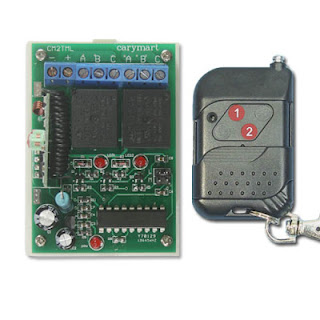2 Channel RF Remote Control & Receiver Switch 3 LED Lights

Tang was looking for wireless remote control to switch his three led light strips. one button of remote turns on one red light; another button turns off that red light and turns on two green lights at the same time. The working voltage of led light is 12v dc. According to his requirements, a dc power 2-channel receiver with latching mode and 2-button remote controller are suitable for him. Picture from http://www.carymart.com Simple wiring diagram is as follows: Channel 1 is for red light. Channel 2 is for two green lights. When button 1 of remote turns on the red light, two green lights are off. When button 2 turns on two green lights, the red light is off. Online shop: http://www.carymart.com/
